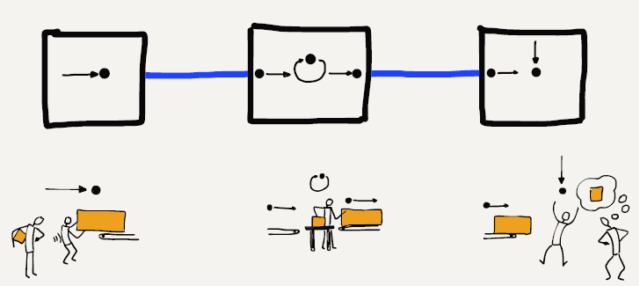In the 1970s and 1980s, people working at universities around the world wanted to send each other data and messages using these computer-to-computer connections. Since the cost for each connection was so high and increased with distance, computers generally only had connections to other nearby computers. But if the computer that you were connected to was connected to another computer and that computer in turn was connected to another computer, and so on, you could send a message a long distance as long as each of the computers along the route of the message agreed to store and forward your message.

Over time, with relatively few connections you could send data long distances across a patchwork of network connections as long as you were patient. Along the way, after your message reached one computer, it would have to wait until its turn came to be sent to the next computer along the route. A message would arrive at an intermediate computer, be stored for a while (perhaps hours, depending on traffic), and then be forwarded one more connection (or “hop”).
Sending entire messages one at a time this way, a message might take minutes, hours, or even days to arrive at its ultimate destination, depending on the traffic at each of the hops. But even if it took a few hours for an email message to find its way from one part of the country to another, this was still much quicker and easier than sending a letter or postcard.